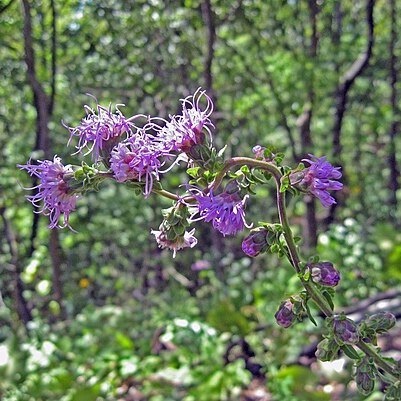Similar to no. 1 [Liatris scariosa (L.) Willd.] and evidently hybridizing with it, but avg more robust, to 15 dm, and often more evidently hairy; heads 6–60, often more than 20, commonly in a spiciform infl with the heads turned away from the axis, or the peduncles sometimes more elongate and ascending-spreading, to 5 cm; invol glabrous or often evidently short-hairy, the middle and outer bracts commonly notably loose or squarrose above the middle; fls (11–)14–24(–28) per head. Dry woods and open places, especially in rocky or sandy soil; s. W.Va. and s. O. to s. Mo., s. to Fla. and La. July– Sept. (L. earlei; L. ruthii; L. scabra–the more hairy phase; L. tracyi)

